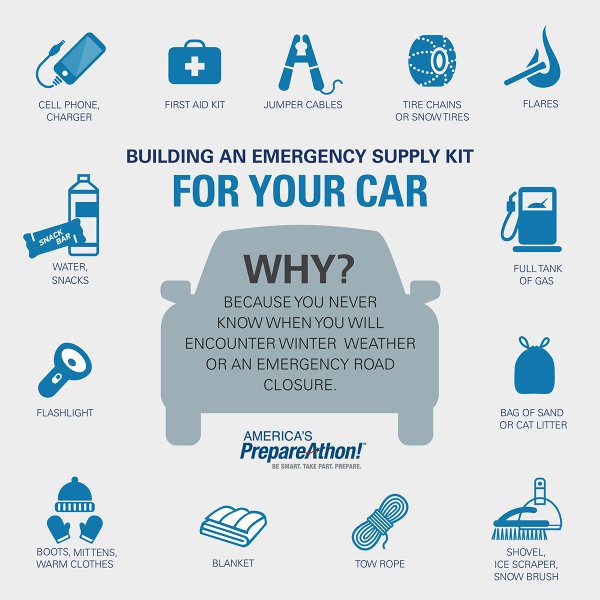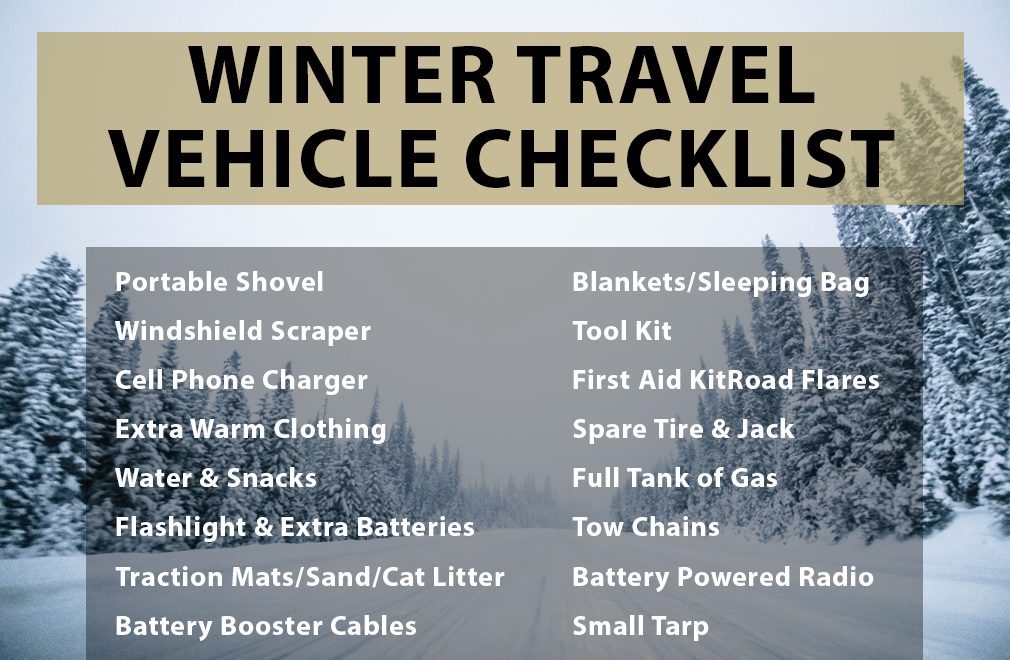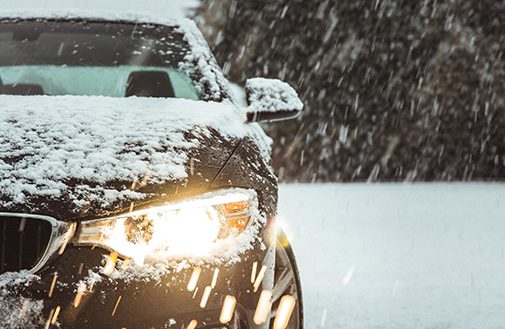With changing weather conditions and winter approaching, it is a good time to talk about winter driving in the West Yellowstone, Montana area, and Yellowstone National Park. Many of you are not from this area, and there are lots of good things to know and to be prepared for since these storms can sometimes be unpredictable and appear out of nowhere!

First off, make sure you have an emergency survival road kit in your vehicle! I have a previously written blog on here that specifically addresses how to put that together and what you should have. Also, always make sure that you are heading out with a full tank of gas. You never know if you are going to get stuck someplace and need to use your heater for survival.
Make sure to check road conditions and weather reports before you head out. Weather can change in an instant here, especially in the park which creates its own weather patterns. A very important tool to have in your cell phone for traveling, is the park road conditions texting service. Text 82190 to 888-777 to receive texts whenever a road in Yellowstone closes or reopens. Also, make sure you are well rested before heading out and alert while driving. I carry a nice hot thermos full of coffee, just in case I need it later in the day. Take breaks driving to stay alert if you’re getting sleepy.
If you are driving and snowplows are out, stay back! Do not crowd the plow. The driver may suddenly need to stop, and you can cause an accident. The snow will fly back on your windshield too, and you won’t be able to see. Give the plows space! Please pass only if you can see well enough to be certain it is safe!
If you find yourself in a storm, change the way you would normally drive. Turn off the cruise control and drive slower than the marked speed limit if road conditions are not good. Many of our roads inside and outside the park have plowed pullouts, if you feel the need to drive slower than traffic is moving, please use them and let others go by. Leave more space between you and other vehicles, if the vehicle in front of you should decide to stop quickly or lose control, you will need more space and time to stop. Be very cautious not to slam on the brakes, brake slowly and gently so you don’t lose control of your vehicle. Also, be careful not to over-correct or jerk the steering wheel, both can cause accidents.
Reminder: All roads into Yellowstone National Park close to private vehicles in early November and do not reopen until the third weekend in April. Only the road from Gardiner to Cooke City, Montana, remains open with no southern access. During this time only guided snowcoach and snowmobile tours are allowed into the Park.
Give yourself a little extra time to reach your destination, and you should be fine. There is nothing to see that is worth your life or someone else’s. Please be safe and enjoy your visit.
AUTHOR: CINDY SHAFFER
With changing weather conditions and winter approaching, it is a good time to talk about winter driving in the West Yellowstone, Montana area, and Yellowstone National Park. Many of you are not from this area, and there are lots of good things to know and to be prepared for since these storms can sometimes be unpredictable and appear out of nowhere!

First off, make sure you have an emergency survival road kit in your vehicle! I have a previously written blog on here that specifically addresses how to put that together and what you should have. Also, always make sure that you are heading out with a full tank of gas. You never know if you are going to get stuck someplace and need to use your heater for survival.
Make sure to check road conditions and weather reports before you head out. Weather can change in an instant here, especially in the park which creates its own weather patterns. A very important tool to have in your cell phone for traveling, is the park road conditions texting service. Text 82190 to 888-777 to receive texts whenever a road in Yellowstone closes or reopens. Also, make sure you are well rested before heading out and alert while driving. I carry a nice hot thermos full of coffee, just in case I need it later in the day. Take breaks driving to stay alert if you’re getting sleepy.
If you are driving and snowplows are out, stay back! Do not crowd the plow. The driver may suddenly need to stop, and you can cause an accident. The snow will fly back on your windshield too, and you won’t be able to see. Give the plows space! Please pass only if you can see well enough to be certain it is safe!
If you find yourself in a storm, change the way you would normally drive. Turn off the cruise control and drive slower than the marked speed limit if road conditions are not good. Many of our roads inside and outside the park have plowed pullouts, if you feel the need to drive slower than traffic is moving, please use them and let others go by. Leave more space between you and other vehicles, if the vehicle in front of you should decide to stop quickly or lose control, you will need more space and time to stop. Be very cautious not to slam on the brakes, brake slowly and gently so you don’t lose control of your vehicle. Also, be careful not to over-correct or jerk the steering wheel, both can cause accidents.
Reminder: All roads into Yellowstone National Park close to private vehicles in early November and do not reopen until the third weekend in April. Only the road from Gardiner to Cooke City, Montana, remains open with no southern access. During this time only guided snowcoach and snowmobile tours are allowed into the Park.
Give yourself a little extra time to reach your destination, and you should be fine. There is nothing to see that is worth your life or someone else’s. Please be safe and enjoy your visit.
AUTHOR: CINDY SHAFFER

